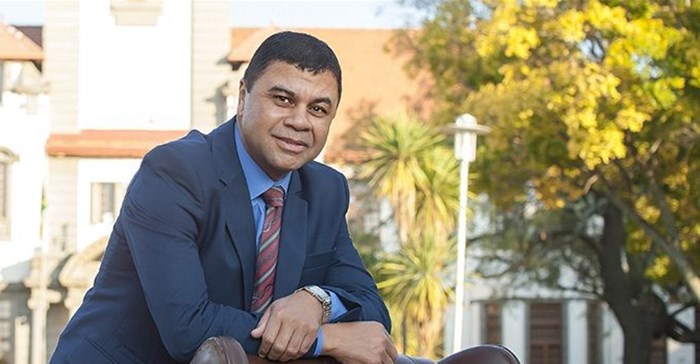
Top stories




Mining and the NDP
Mining has historically been at the heart of the South African economy and will continue to play a critical role in supporting the goals and aspirations of the National Development Plan (NDP). Although considered by many as a sunset industry, mining is contributing about 7% to the gross domestic product (GDP); despite the South African economy having diversified over time, the mining industry remains a central part of the economy, with an indirect contribution of over 17% to the GDP. It is estimated that between 50% and 60% of a South African mine’s purchases (consumables, capital goods, and services) are currently being sourced from BEE suppliers.
The ANC, under the leadership of Cyril Ramaphosa, has indicated its commitment to the NDP and stated that it foresees an economy that encourages and invites investment, offer policy certainty, and addresses barriers that inhibit growth and social inclusion. However, with the challenges within the ANC, further complicated by corruption and state capture, it remains to be seen whether this commitment will be honoured. The appointment last year of the new minister of mineral resources, Gwede Mantashe, has restored some optimism about the future of the South African mining industry. Creating an environment with adequate infrastructure, less policy, and regulatory uncertainty, and a skilled, but flexible workforce, should go a long way towards attracting investment.
Bulk commodities such as iron ore, coal, manganese, and chrome are performing fairly well. However, precious metals are not performing that well, and specifically platinum is struggling, despite various cost-saving initiatives, lower production of gold and platinum means higher unit costs. Mining input costs have increased significantly more than the Consumer Price Index (CPI). Production output from South Africa’s gold mines has been declining over the past seven years, with Statistics South Africa reporting a 14% drop in production year-on-year.
Mining companies are positioning themselves for the future by re-aligning their portfolio of assets with their long-term strategies. This has resulted in ongoing disposals of non-core assets and significant increase in acquisitions. Mining analysts said they expected local companies to consolidate as a strategy to mitigate against operational inefficiencies and rising input costs, following the mega-mergers in the global gold sector (Barrick Gold merger with Randgold and Newmont Mining agreeing to buy Goldcorp).
South Africa’s gold production accounts for only 4% of the global gold production, and new investment in this sector is highly unlikely in South Africa. Although the platinum mining industry has proven to be more important than gold, this sector is battling in the face of global oversupply, depressed prices, and retrenchments. It seems as if this sector is split between high-risk, expensive underground mining (Impala, Lonmin, and Sibanye-Stillwater) and open-pit extraction (Anglo American Platinum), where economies of scale and mechanisation generate better efficiencies and return on investment. Recently, there has been signs of an improvement in the basket price of platinum group metals; however, leadership in this sector has to be guarded against having a short-term focus versus understanding the fundamentals of the sector.
The revised Mining Charter was approved in September last year. The ‘once empowered, always empowered’ principle will apply to companies that previously met the 26% black ownership requirement. There is a view that the introduction of carried interest (CI) will undermine investment in new mining projects, and questions are raised whether CI is the best way for communities and employees to share in the benefits of mining projects in a sustainable manner. The challenge is to determine how to increase the size of the pie to create more value for all stakeholders in an environment of ever-increasing costs, reducing margins, and increased volatility.
Last year, the Sunday Times reported that South African gold is looted on an ‘industrial scale’, with research estimating that the country loses about R14.4 bn through illegal gold mining every year. The illicit trade (which, according to the Minerals Council South Africa, is led by international criminal syndicates) is reportedly driven by rising commodity prices, the limited capacity of inspectors in the South African Diamond and Precious Metals Regulator, and the closure of the South African Revenue Services (Sars) illicit economic investigative unit.
To assess the state of mining in South Africa – and apart from risks such as commodity prices, foreign exchange fluctuations, and cost pressures – it is crucial to manage the following key challenges in this industry: energy costs and the certainty of electricity supply (especially against the Eskom financial and operational woes); regulatory uncertainty; capacity of government to deliver (the major impact of state capture – estimated to cost the country around R100bn over the past 10 years); and safety (although the Department of Mineral Resources shows a downward trend in fatalities for the mining industry over the past 10 years – it is still the number one priority for the industry).
To find new ways of making mining safer, more efficient and sustainable, more integrated with the needs of local communities, while decreasing its environmental footprint, an increased focus on research, innovation, and the use of advanced technology is essential. There are already exciting developments in this regard. The Anglo American FutureSmart Mining Initiative, mines that use drone technology to monitor movements of ore and labour, remote-controlled drilling machines to access dangerous and previously inaccessible areas (as tested by Sibanye-Stillwater), advanced technologies using artificial intelligence and machine learning to improve operations and safety, are examples of a focus on extracting more metal with less waste, while minimising cost and the environmental footprint.
Although there are key challenges facing the South African mining industry in 2019, I believe it is through continuous conversation, engagement, and the building of trust among business, labour, and government, and through a people-centred approach, that this industry will continue to provide effective returns for its shareholders and stakeholders.